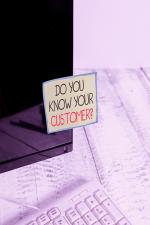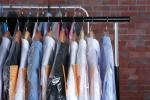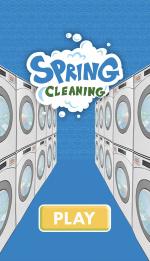CHICAGO — For today’s dry cleaners, creating multi-generational appeal isn't just about attracting new customers—it’s about building a sustainable business model for the company’s future. With younger consumers embracing secondhand fashion and convenience, dry cleaners that adapt their services and feedback systems can tap into emerging market trends.
In Part 1 of this series, we examined how dry cleaners can tailor their message to connect with different demographics and ways to educate consumers. In Part 2, we explored balancing technology and personal service, the priorities of different generations, and the opportunities that sustainability may bring.
Today, we’ll conclude by looking at trends that might be coming to the industry and taking a multi-generational approach to serving customers.
Emerging Trends to Watch
For cleaners looking to connect with customers, some emerging trends could present opportunities:
- The rise of secondhand and thrifted clothing: “Secondhand clothing is far more popular with young people, with Gen Z, than it is with Gen X or boomers right now,” says Lorynn Divita, associate professor in apparel design and merchandising at Baylor University. “This creates an opportunity to promote services specifically for thrifted finds. ‘Clean that thrift-shop find before you wear it — start fresh.’ There’s a campaign right there.”
- Temporary ownership mindset: “A lot of young people not only buy secondhand, but they will frequently sell secondhand,” Divita says. “This creates an opportunity to position dry cleaning as maintaining item value for future resale.”
- Wash-and-fold services with delivery: “We think wash and fold is a growing category for us,” says Mary Ann Donaghy, chief marketing and customer experience officer for ZIPS Cleaners. “This particularly appeals to younger customers who prioritize convenience.”
Collecting and Implementing Feedback
Understanding what different generations want requires effective feedback collection, which can be challenging across age groups.
“Young people don’t respond to surveys like older people do,” Divita says. She suggests creating rewards for participation. “Offer them an incentive to provide feedback. Something like, ‘If you take this survey, you can get $5 off of your next order of $20 or more.’”
She also recommends implementing loyalty programs similar to other service industries.
“Many of the local restaurants and coffee shops I go to offer loyalty rewards just by using my debit card and my phone number,” she says. “It keeps tabs on the number of times I’ve been there and the amount of money I’ve spent.”
Donaghy emphasizes the importance of data-driven decision-making at ZIPS.
“We’ve uploaded our customer files from all our stores,” she says, “and appended them to a third-party data source to analyze store-level demographics, including age, income, homeownership, gender, children in the home, and lifestyle preferences.”
This data can sometimes uncover surprises, which are valuable for outreach efforts.
“In general, our high-value customer is in the 45-to-65 slot, but in our Austin (Texas) stores, that average age is about 10 years younger,” Donaghy says. “We also skew far more male in Austin, and far more to renters vs. homeowners. So, it’s important to understand those nuances as we direct our marketing and our messages.”
A Multi-Generational Approach
Successfully appealing to customers across generations requires understanding their different needs, communication preferences and values. The good news is that drycleaning services offer benefits that can resonate with every age group when properly communicated.
“With dry cleaning, we need to be lowering people’s psychological barriers to coming in,” Divita says, noting that this requires cleaners to understand what those barriers might be. “I think dry cleaners, like every group, suffer from being biased because of being so close to the industry. It can be hard sometimes to step away from it and look at it the way potential customers might see it.”
By offering various service options, communicating through multiple channels and emphasizing different benefits to different generations, dry cleaners can successfully bridge generational divides and build a loyal customer base across all demographics.
“It’s different strokes for different folks,” Donaghy says.
For Part 1 of this series, click HERE. For Part 2, click HERE.
Have a question or comment? E-mail our editor Dave Davis at [email protected].





















































